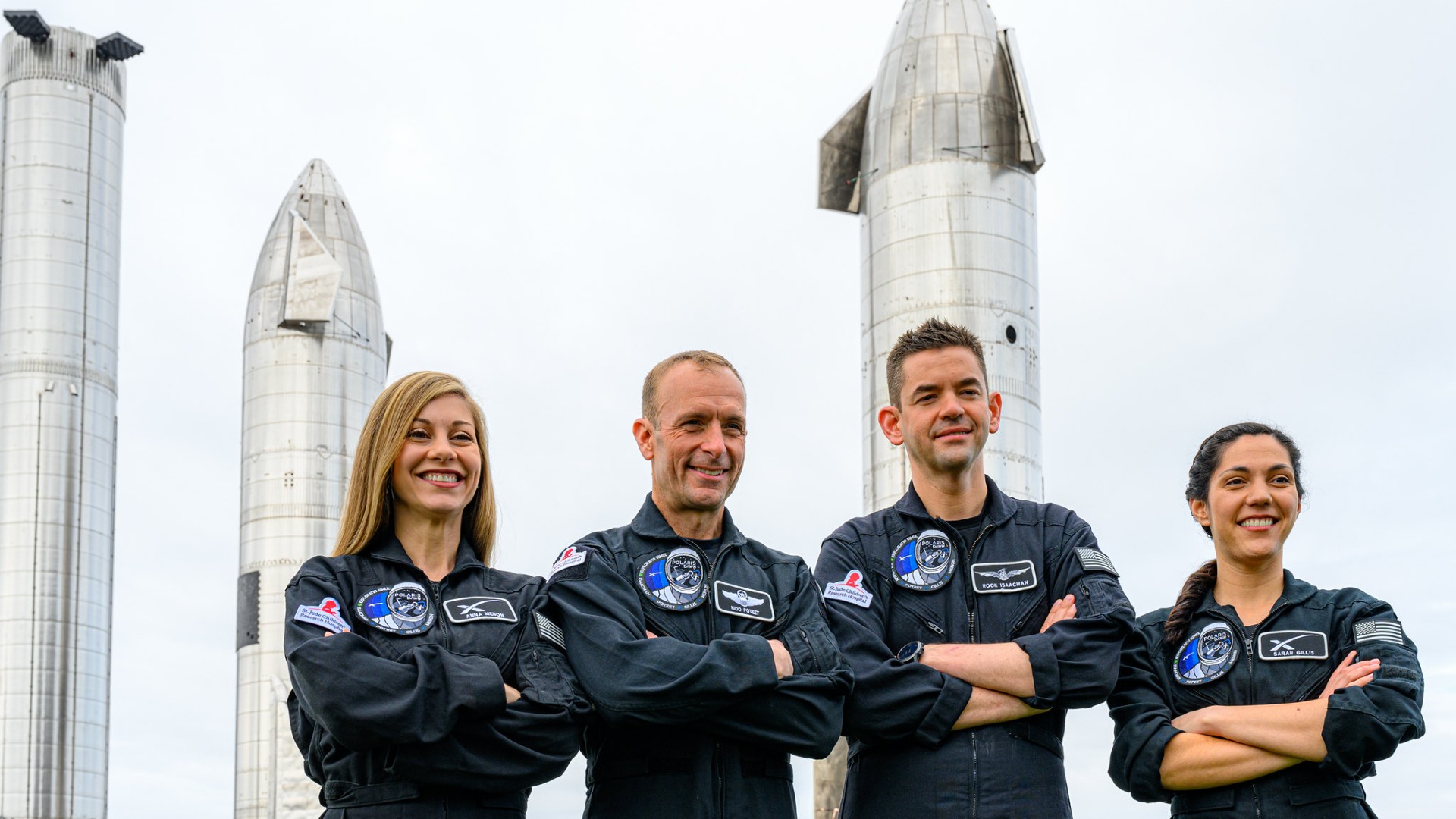SpaceX private Polaris Dawn space mission delayed to April 2024
"Schedule slips should be expected."

A SpaceX mission featuring the first private spacewalk is delayed once again, this time to April 2024. It's known as Polaris Dawn.
Jared Isaacman, the billionaire funding the private space mission in collaboration with SpaceX, disclosed the news Saturday (Dec. 9) in replies on X (formerly Twitter) to a question about when his mission will run.
"April is the goal to launch & the pace of training is accelerating," Isaacman wrote, adding in another tweet, "It's a development program with ambitious objectives. Schedule slips should be expected."
The mission timeline has now been pushed back approximately 18 months from the initial launch target of the fourth quarter of 2022, set when Isaacman first announced the program in February 2022.
Related: Meet the four private Polaris Dawn astronauts SpaceX will launch into orbit
Polaris Dawn is the gate-opener mission of the Isaacman-funded Polaris Program, which aims to conduct three private missions using SpaceX spacecraft. Isaacman was also the commander of Inspiration4, a 2021 space excursion that sent four civilian astronauts (including Isaacman) to orbit aboard a SpaceX craft and raised money for St. Jude Children's Research Hospital in Memphis.
Polaris Dawn aims to attempt the first-ever commercial spacewalk, test Starlink in space and do science work. Astronauts include Isaacman as commander, pilot Scott Poteet (a retired U.S. Air Force colonel), and senior SpaceX ground controllers Sarah Gillis and Anna Menon. Like Inspiration4, Polaris Dawn will also raise money for St. Jude.
Breaking space news, the latest updates on rocket launches, skywatching events and more!

In another X post, Isaacman outlined some challenges that are in store for the Polaris Dawn team in developing the mission. For instance, it will require new spacesuits optimized for spacewalks that are different from the intravehicular sleek spacesuits SpaceX typically uses for astronaut missions.
"That includes suit changes for mobility, life support redundancy, sun glare, some resiliency to MMOD (micrometeorites and orbital debris)," Isaacman wrote, adding that Crew Dragon also needs to be designed to let out air and then let it back in again: "The vehicle was (initially) designed to go to vacuum only in an emergency," he said.
The laser experiment is facing unspecified challenges: "It's not just turning the router switch to the ON position (as) every Draco (thruster) firing could break a link," Isaacman said.
There are also concerns about the radiation exposure the crew would face as they attempt to break an altitude record in low Earth orbit: "Avionics don't like radiation which means there is a lot to analyze and sim to get right."
Isaacman emphasized he has confidence in the team in fixing these issues: "SpaceX engineers are doing an outstanding job tackling big problems very quickly."
The larger Polaris Program is still in the early stages of planning, but Isaacman has said he wants to use Starship for at least one of the missions. He also has offered to boost the orbit of the Hubble Space Telescope; NASA has opened solicitations to the community to see about the feasibility of other offers.
Starship itself is facing technical challenges that will likely see some of its bigger contracts delay as well, as the system has made two space attempts in 2023. The spacecraft soared high in the air on both occasions, but never achieved its goal of circling the Earth and splashing down again.
NASA's first human moon landing with Starship, Artemis 3, will likely now take place no earlier than 2027, according to a recent report with the Government Accountability Office. The agency has been warning for months that the moon landing will likely delay from 2025 while Starship continues testing, but it is prepared to pivot to other types of missions for the moonbound Artemis program. A round-the-moon mission known as Artemis 2 will launch with four astronauts onboard in late 2024, using NASA's Orion spacecraft.

Elizabeth Howell (she/her), Ph.D., was a staff writer in the spaceflight channel between 2022 and 2024 specializing in Canadian space news. She was contributing writer for Space.com for 10 years from 2012 to 2024. Elizabeth's reporting includes multiple exclusives with the White House, leading world coverage about a lost-and-found space tomato on the International Space Station, witnessing five human spaceflight launches on two continents, flying parabolic, working inside a spacesuit, and participating in a simulated Mars mission. Her latest book, "Why Am I Taller?" (ECW Press, 2022) is co-written with astronaut Dave Williams.
